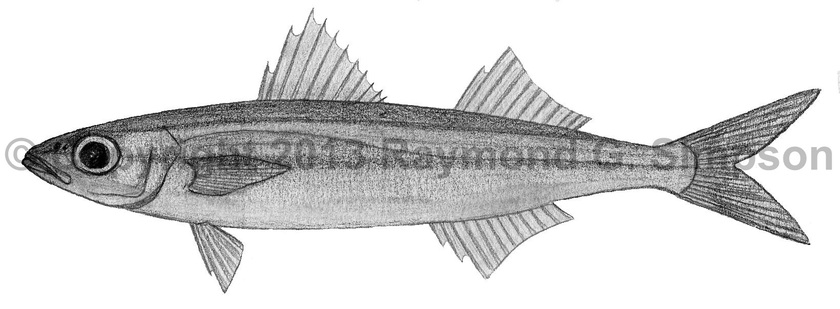
Common Name
Bonnetmouth
Year Described
Schultz, 1945
Identification
Dorsal Fin: IX-X + II, 9-10
Anal Fin: II, 9-10
Pectoral Fin: 18-19
Gill Rakers: 8 (upper); 20 (lower) on first arch
Lateral Line Scales: 75
Body slender and elongate. Mouth small and highly protractile. Teeth absent. Spiny and soft dorsal fins separate. Tail forked.
Color
Dusky yellow above, grading to whitish below. Living specimens with bright metallic sheen. Snout yellowish. There are 3-4 yellow to brown stripes on the body (the mid-body and dorsal stripes being the most obvious). Fins are transparent except for a metallic sheen on the caudal fin lobes.
Size
Maximum size to 12.5cm TL.
Habitat
Mostly shallow water reefs (to 90m). Schools in midwater.
Range
The Bahamas to N. South America, including the Caribbean islands. Also Bermuda. Rare on the continental coast of Central America.
References
Lindeman, K.C. 2002. Haemulidae (pp. 1522-1550). In: Carpenter. 2002. The living marine resources of the Western Central Atlantic. Vol. 3: Bony fishes part 2 (Opistognathidae to Molidae). FAO Species Identification Guides for Fisheries Purposes. American Society of Ichthyologists and Herpetologists Special Publication No. 5. FAO of the U.N., Rome.
McEachran, J.D. and J.D. Fechhelm. 2005. Fishes of the Gulf of Mexico. Volume 2: Scorpaeniformes to Tetraodontiformes. University of Texas Press, Austin. i-viii +1-1004.
Other Notes
Formerly in the family Inermiidae, but this and Inermia vittata nest within a clade containing the grunts.